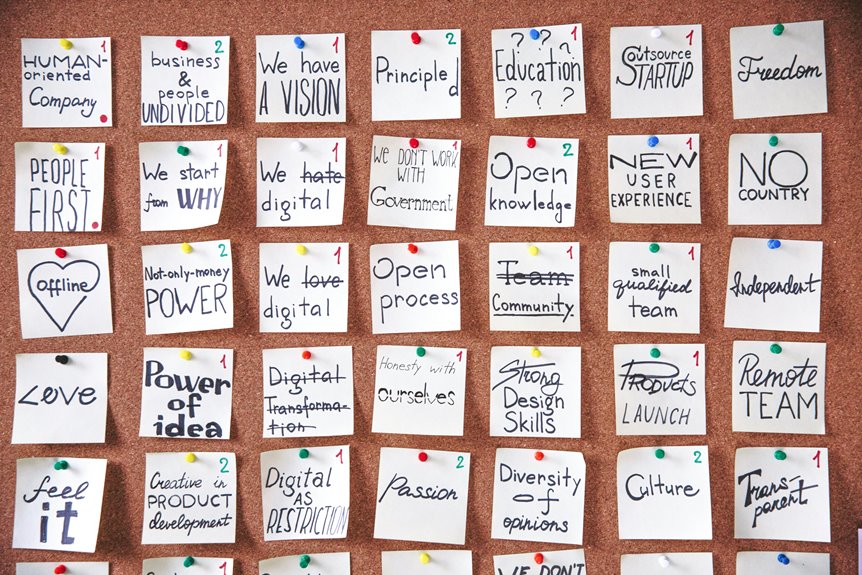Designing Agile Leadership 3513988698

Designing agile leadership requires a nuanced understanding of the complexities leaders face today. It involves nurturing qualities like empathy and adaptability while fostering collaboration among team members. Organizations must create an environment where diverse perspectives thrive, enhancing decision-making. As the landscape continues to shift, the need for resilient cultures becomes evident. How can leaders effectively navigate these challenges to drive innovation and success? The conversation on this crucial topic is just beginning.
Understanding Agility in Leadership
As organizations navigate an increasingly complex and fast-paced environment, understanding agility in leadership becomes essential for fostering resilience and innovation.
Adaptive leadership within agile frameworks allows leaders to respond effectively to change, promoting a culture of collaboration and flexibility.
Key Qualities of Agile Leaders
Effective agile leaders possess several key qualities that enable them to thrive in dynamic environments.
They exhibit innovative thinking, allowing them to embrace change and inspire creativity within their teams.
Additionally, their transformational vision fosters a collaborative culture that values diverse perspectives.
These leaders demonstrate empathy, empowering individuals to explore their potential while adapting strategies that align with the fluid nature of their surroundings.
Strategies for Fostering Collaboration
How can leaders cultivate an environment where collaboration flourishes?
By prioritizing open communication, leaders can enhance team dynamics, allowing diverse perspectives to emerge.
Encouraging empathy fosters trust, while adopting conflict resolution strategies ensures challenges become opportunities for growth.
This adaptive approach not only empowers individuals but also nurtures a sense of freedom, enabling teams to innovate and thrive collectively in a supportive atmosphere.
Enhancing Decision-Making Processes
In the pursuit of enhancing decision-making processes, leaders can benefit from embracing collaborative strategies that invite diverse perspectives.
By integrating data-driven insights with an empathetic approach, they can make choices that resonate with their teams and stakeholders.
This combination not only strengthens trust but also fosters a more inclusive environment for effective decision-making.
Collaborative Decision-Making Strategies
What principles guide teams in navigating complex decisions together? Emphasizing consensus building and shared responsibility fosters an environment where diverse perspectives thrive.
Teams can enhance their decision-making processes through:
- Open communication
- Active listening
- Inclusive brainstorming
- Iterative feedback
These strategies empower individuals, encouraging collaboration and adaptability while respecting each member’s voice, ultimately leading to informed, collective choices.
Data-Driven Insights Utilization
While teams often rely on their collective experiences and insights, integrating data-driven insights into decision-making processes can significantly enhance outcomes.
By leveraging data analytics and performance metrics, leaders can foster a more informed environment that encourages collaboration and adaptability.
This approach not only empowers teams but also nurtures a culture of continuous improvement, allowing for greater freedom in exploring innovative solutions.
Empathy in Leadership Choices
Integrating empathy into leadership choices significantly enhances decision-making processes within agile teams. This approach fosters an environment where emotional intelligence and compassionate communication thrive.
Key aspects include:
- Understanding team members’ perspectives.
- Encouraging open dialogue and feedback.
- Balancing individual needs with team goals.
- Promoting a culture of trust and collaboration.
Such practices empower leaders to make informed, inclusive decisions that resonate with their teams.
Navigating Uncertainty and Change
In the face of constant change and unpredictability, agile leaders recognize the importance of fostering a culture that embraces adaptability. By implementing effective risk assessment and change management strategies, they enhance resilience training and promote leadership flexibility. This collaborative approach facilitates innovation adoption and uncertainty navigation, empowering teams to respond dynamically to crises with strategic foresight.
| Agile Methodologies | Adaptive Strategies | Crisis Response |
|---|---|---|
| Scrum | Continuous Learning | Rapid Prototyping |
| Kanban | Feedback Loops | Scenario Planning |
| Lean | Flexibility | Resource Allocation |
Building a Resilient Organizational Culture
In fostering a resilient organizational culture, organizations can benefit from embracing adaptive mindsets that encourage flexibility and innovation.
Open communication serves as a vital component, allowing team members to share ideas and concerns freely, thus enhancing collaboration.
Embracing Adaptive Mindsets
While fostering a resilient organizational culture can be challenging, embracing adaptive mindsets serves as a vital catalyst for growth and innovation.
Key elements include:
- Encouraging adaptive learning to enhance skillsets.
- Promoting flexible thinking to tackle unforeseen challenges.
- Supporting collaboration for diverse perspectives.
- Fostering a safe environment for experimentation and failure.
These components empower individuals, cultivating a culture that thrives on freedom and resilience.
Encouraging Open Communication
Open communication is essential for building a resilient organizational culture, as it fosters trust and collaboration among team members.
By promoting active listening and establishing feedback loops, organizations can create an environment where individuals feel valued and empowered.
This openness encourages diverse perspectives and innovative solutions, ultimately enhancing adaptability and strengthening the collective spirit, allowing everyone the freedom to contribute meaningfully.
Conclusion
In conclusion, designing agile leadership is essential for organizations seeking to thrive in an ever-changing landscape. By embracing qualities such as empathy and innovative thinking, leaders can cultivate collaboration and resilience within their teams. As we reflect on the importance of adaptability, one must ask: how can we create an environment where every voice is heard, and every idea is valued? Ultimately, fostering such a culture not only enhances decision-making but also paves the way for sustainable success.




